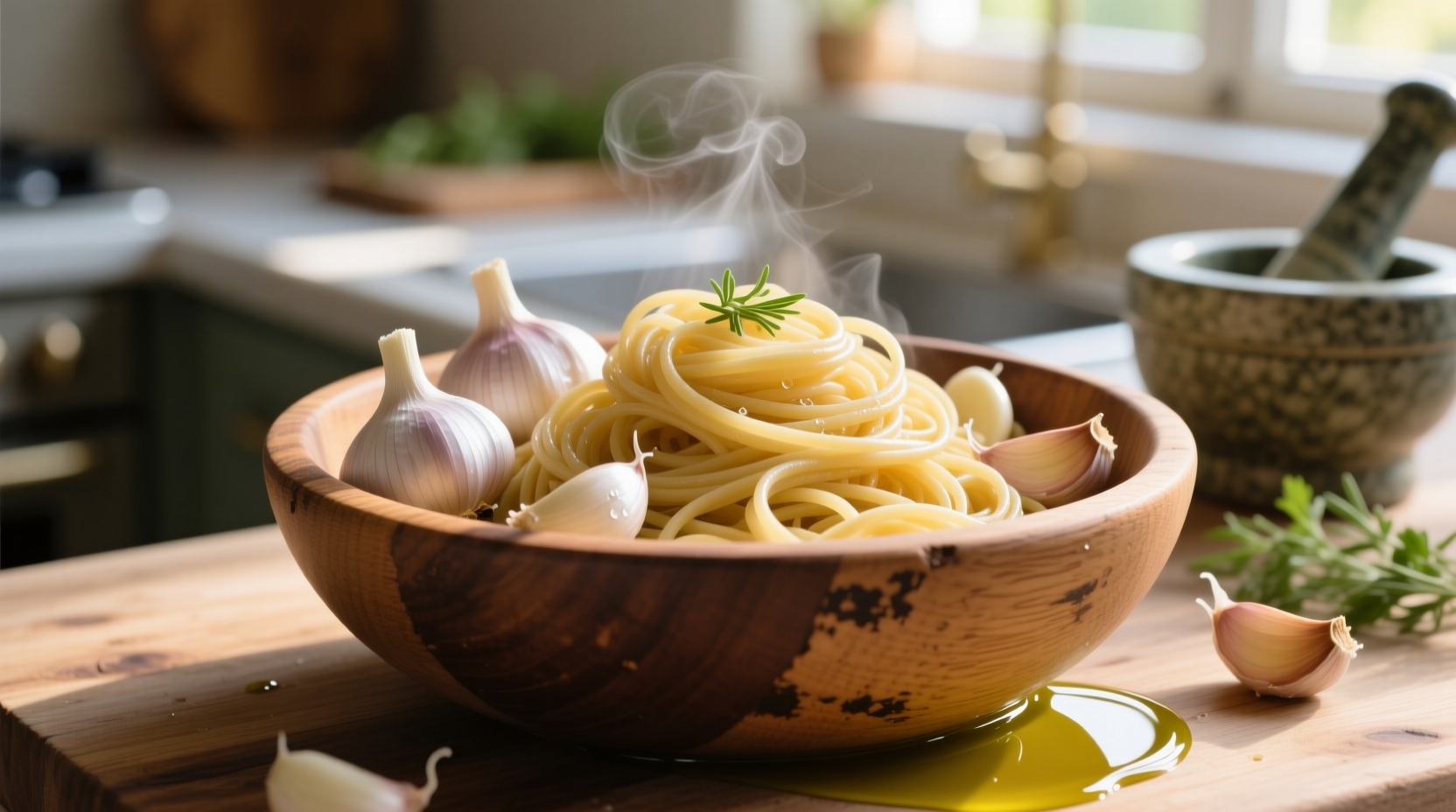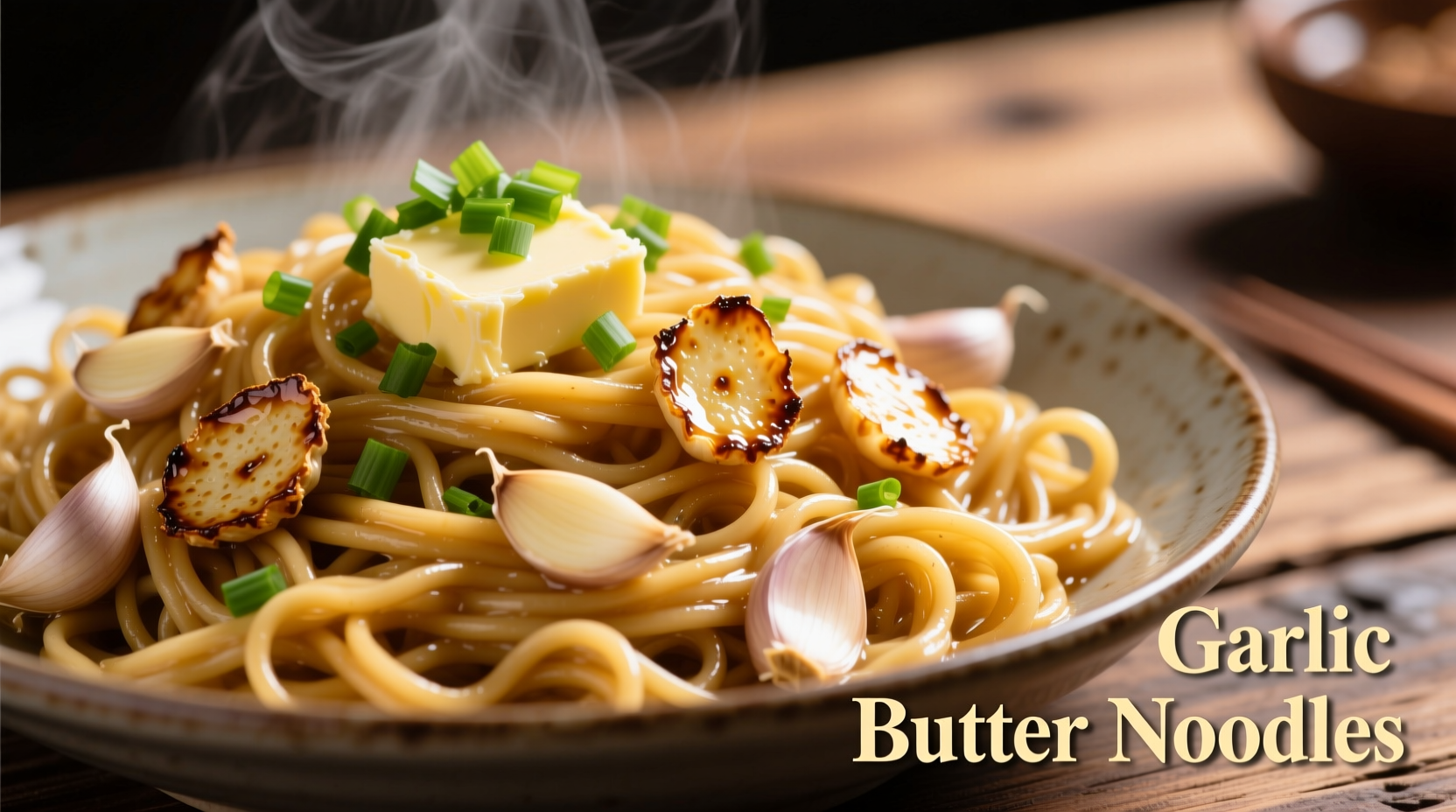Butter noodles with garlic is a simple yet elegant dish that requires just 5 quality ingredients and 15 minutes to prepare. The perfect ratio is 8 ounces of pasta, 4 tablespoons of unsalted butter, 4 cloves of fresh garlic, salt to taste, and optional parsley for garnish. Cook pasta al dente, reserve 1/2 cup starchy water, sauté minced garlic in butter until fragrant but not browned, then combine with pasta and enough reserved water to create a silky emulsion that coats every strand.
There's something magical about the simplicity of butter noodles with garlic. This humble dish has graced tables across Europe for centuries, evolving from basic sustenance to a culinary staple that showcases how minimal ingredients can create maximum flavor. Whether you're a beginner cook or a seasoned chef, mastering this recipe unlocks a world of possibilities for quick, satisfying meals that feel both comforting and sophisticated.
The Essential Ingredients That Make All the Difference
While butter noodles with garlic appears straightforward, ingredient quality directly impacts your final dish. Let's break down why each component matters and how to select the best options for authentic flavor.
Pasta selection affects texture and sauce adherence. Traditional Italian recipes favor linguine or spaghetti, but regional variations use whatever's available. The key is choosing bronze-die extruded pasta, which has a slightly rougher surface that better captures the butter-garlic emulsion. According to the Italian Made Pasta Guide, this manufacturing method dates back to the 1800s and creates superior sauce adherence compared to modern Teflon-extruded alternatives.
Butter quality transforms your dish from ordinary to extraordinary. European-style butter with higher fat content (82-86% versus 80% in American butter) creates a richer emulsion. The USDA's Dairy Products Guidelines confirm that butter's water content significantly affects cooking performance - lower water content means less splattering and better emulsion stability.
| Butter Type | Fat Content | Best For | Smoke Point |
|---|---|---|---|
| European Cultured | 82-86% | Final emulsion | 302°F (150°C) |
| Unsalted American | 80% | Sauteing garlic | 322°F (161°C) |
| Ghee | 99% | High-heat cooking | 485°F (252°C) |
Garlic preparation makes or breaks your dish. Fresh garlic cloves contain allicin, the compound responsible for both flavor and health benefits. Research from the National Center for Biotechnology Information shows that crushing garlic and letting it rest for 10 minutes before cooking maximizes allicin production, enhancing both flavor and nutritional value.

Step-by-Step Cooking Process for Perfect Results
Follow this professional technique to create restaurant-quality butter noodles with garlic every time. The sequence matters as much as the ingredients.
1. Perfect Pasta Cooking Technique
Use a large pot with 4-6 quarts of well-salted water (it should taste like the sea). Add pasta and stir immediately to prevent sticking. Cook until just shy of al dente - about 1 minute less than package instructions. Reserve 1/2 cup of starchy pasta water before draining. This water contains amylopectin, a starch that helps create the silky emulsion essential for proper sauce adherence.
2. Garlic Infusion Method
While pasta cooks, mince 4 garlic cloves finely. Heat 2 tablespoons unsalted butter in a large skillet over medium-low heat. Add garlic and cook gently for 2-3 minutes until fragrant but never browned - browning creates bitter compounds. The ideal temperature range is 250-280°F (121-138°C), just below butter's smoke point.
3. Emulsion Creation
Add drained pasta to the skillet with garlic butter. Increase heat to medium and add 1/4 cup reserved pasta water. Toss vigorously for 1-2 minutes as the starches and fats combine to create a glossy coating. The mechanical action of tossing helps distribute the emulsion evenly. Add remaining butter 1 tablespoon at a time, continuing to toss until fully incorporated.
Avoid These Common Butter Noodle Mistakes
Even experienced cooks make these critical errors that compromise texture and flavor:
- Overcooking garlic - Garlic burns at 325°F (163°C), creating acrid flavors. Keep heat low and watch carefully.
- Skipping pasta water - Without starchy water, the sauce won't emulsify properly and will separate.
- Using pre-minced garlic - Jarred garlic contains preservatives that alter flavor and lacks enzymatic activity for optimal taste development.
- Adding cheese unnecessarily - Traditional butter noodles with garlic contains no cheese, which can curdle in the acidic environment.
Variations for Different Dietary Needs and Preferences
This versatile dish adapts beautifully to various dietary requirements while maintaining its essential character.
Vegetarian and Vegan Adaptations
For a vegan version that maintains richness, substitute butter with 3 tablespoons refined coconut oil plus 1 tablespoon nutritional yeast. The Vegan Health Institute confirms that nutritional yeast provides B-vitamins often missing in plant-based diets while contributing umami depth. Add 1 teaspoon miso paste to the cooking water for additional complexity.
Gluten-Free Preparation
When using gluten-free pasta, increase cooking water to 8 quarts and add 1 teaspoon xanthan gum to the water. Gluten-free noodles release starches differently, requiring this adjustment for proper emulsion. Cook until just tender, as GF pasta becomes mushy quickly after reaching ideal texture.
Flavor Enhancements
While purists prefer simplicity, these additions respect the dish's essence while expanding its appeal:
- Lemon zest (1 teaspoon) - brightens richness without acidity
- Red pepper flakes (1/4 teaspoon) - adds subtle warmth
- Grated Parmesan (after plating) - for those who prefer cheesy notes
- Toast 1/4 cup breadcrumbs in the garlic butter for texture contrast
Proper Storage and Reheating Techniques
Butter noodles with garlic reheats surprisingly well when handled correctly. Store in an airtight container with a thin layer of olive oil on top to prevent drying. Refrigerate for up to 3 days.
For best reheating results:
- Add noodles to a skillet with 1-2 tablespoons water
- Cover and heat on low for 2-3 minutes until steaming
- Uncover and toss vigorously to redistribute moisture
- Add 1 teaspoon fresh butter and toss until emulsified
Microwave reheating often creates uneven results, but if necessary, use 50% power in 30-second intervals with a damp paper towel covering the dish.
Why This Simple Dish Endures Across Culinary Traditions
Butter noodles with garlic represents culinary efficiency at its finest - minimal ingredients creating maximum satisfaction. Historical records show similar preparations appearing in 14th century Italian cookbooks like Libro della cucina, where pasta was often served with simple butter and herb preparations. The dish gained wider popularity in the 19th century as pasta production became industrialized and butter quality improved.
Modern chefs appreciate how this dish demonstrates fundamental cooking principles: emulsion creation, temperature control, and ingredient synergy. Unlike complex recipes that mask technique with multiple components, butter noodles with garlic reveals exactly how well you understand cooking fundamentals.











 浙公网安备
33010002000092号
浙公网安备
33010002000092号 浙B2-20120091-4
浙B2-20120091-4